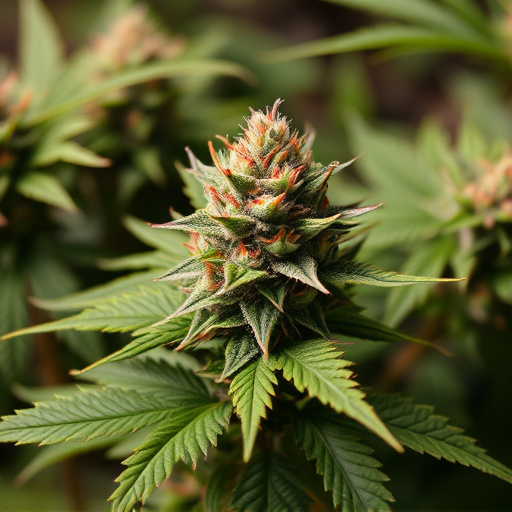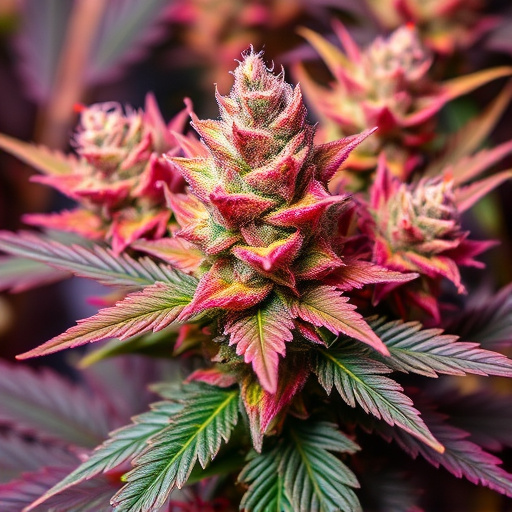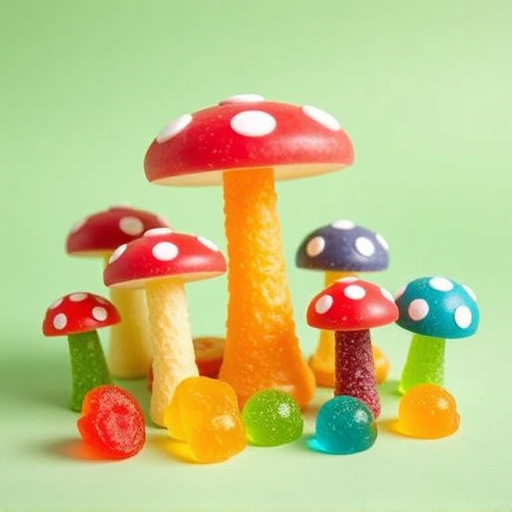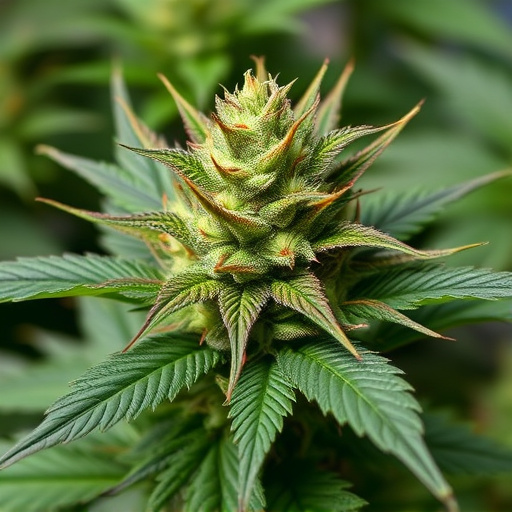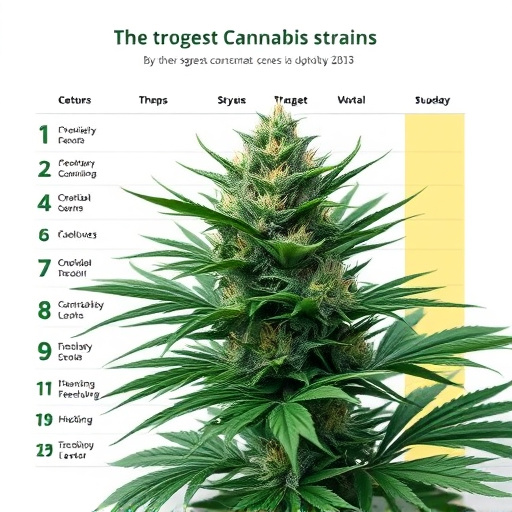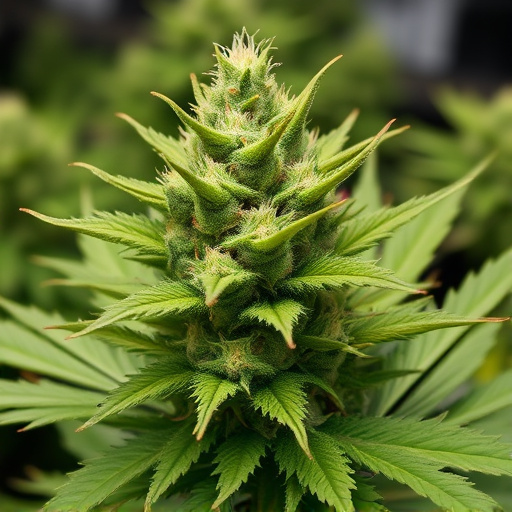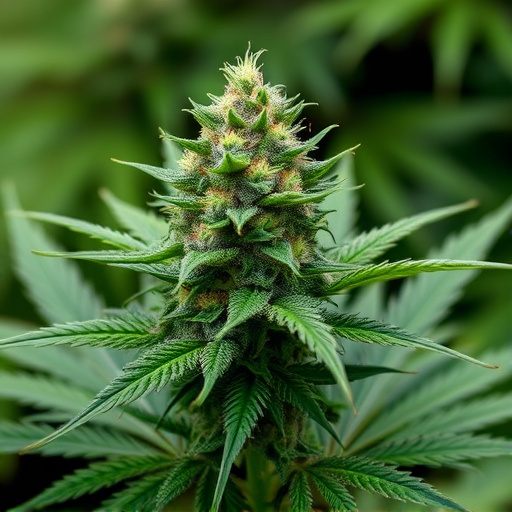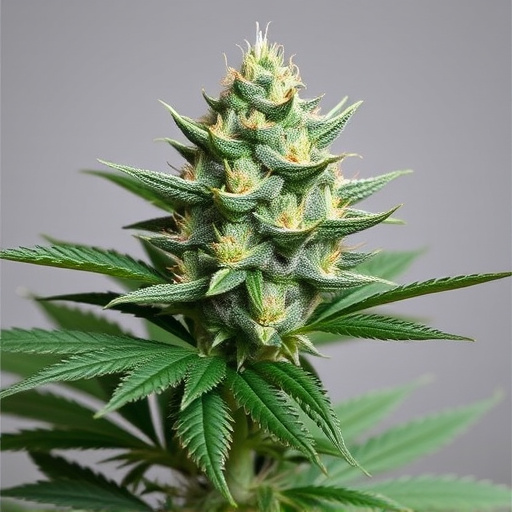The unique aroma of cannabis is driven by complex volatile compounds, notably terpenes and cannabinoids, produced by the Cannabis sativa plant. These compounds create diverse scent profiles in various cannabis strains, with the strongest ones boasting intense, lingering aromas due to higher concentrations. Terpenes like myrcene, limonene, and pinene attract pollinators while repelling predators, playing a key role in cannabis's evolution. Modern breeding has diversified terpene profiles, enhancing sensory experiences and potential therapeutic benefits associated with the strongest cannabis strains. Understanding these compounds is vital for cultivators and consumers alike.
“Unraveling the Intricate World of Cannabis Aroma: Why Does It Smell So Strong? This in-depth exploration delves into the multifaceted reasons behind cannabis’ potent and distinctive fragrance. From the intricate chemistry of volatile compounds to the genetic makeup of various strains and environmental cultivation factors, every element contributes to its unique scent. Discover how terpenes play a dual role in pollination and defense, making cannabis not just fragrant but also fascinating. Moreover, we dissect the most sought-after strongest cannabis strains known for their intense aromas, offering insights into the art of cultivating Cannabis with robust scents.”
- The Chemistry Behind Cannabis Aroma
- – Exploring the volatile compounds responsible for cannabis' distinctive smell.
- – Terpenes and their role in attracting pollinators and repelling predators.
The Chemistry Behind Cannabis Aroma
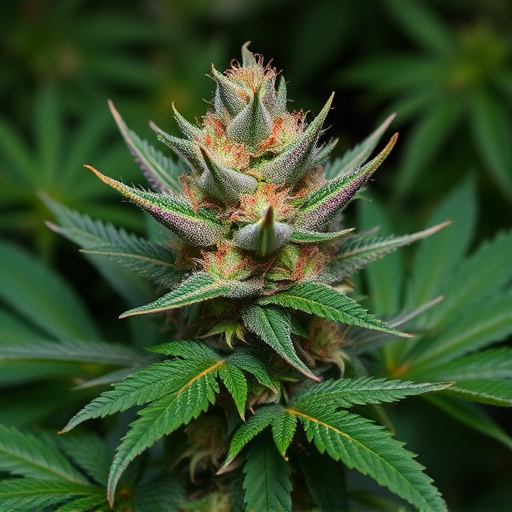
The distinctive and often potent aroma associated with cannabis is a result of complex chemical interactions within the plant itself. Cannabis, or Cannabis sativa, produces a wide array of volatile compounds, primarily within its flowers (or buds), that contribute to its characteristic scent. These compounds, including terpenes and cannabinoids, are responsible for not only the pungent odor but also the various effects users may experience when inhaling or consuming cannabis.
Terpenes, organic compounds with low molecular weight, play a significant role in imparting the unique aroma to different cannabis strains. They are known to interact with cannabinoids, enhancing or modifying their effects. The variety and concentration of terpenes vary across strains, contributing to the diverse range of scents from floral and fruity to spicy and earthy. Among the strongest cannabis strains, high concentrations of these volatile compounds can lead to an intenser, more lingering aroma, making them popular among enthusiasts who appreciate both the sensory experience and the plant’s therapeutic properties.
– Exploring the volatile compounds responsible for cannabis' distinctive smell.
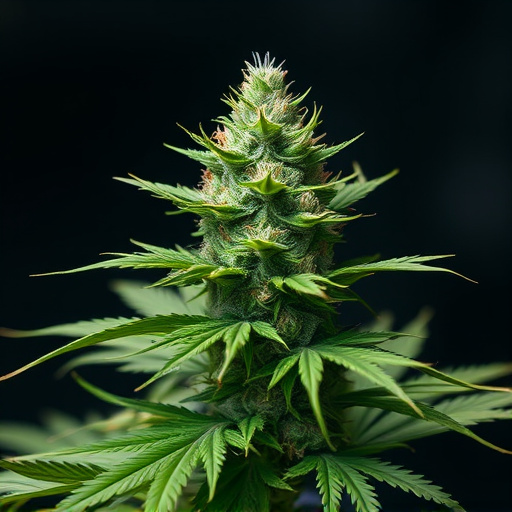
Cannabis flowers emit a potent and recognizable aroma due to their complex composition of volatile compounds. These compounds, present in the resinous glands (trichomes) on the plant’s surface, are responsible for the distinctive smell that can vary across different cannabis strains. Among these, terpenes and cannabinoids are the main contributors. Terpenes, such as myrcene, limonene, and pinene, each offer unique scent profiles, from earthy and musky to citrusy and floral. Cannabinoids like THC and CBD also play a role, with THC known for its potent psychotropic effects and CBD contributing to the plant’s therapeutic attributes.
The combination and concentration of these compounds in specific cannabis strains determine their individual aromas, with some of the strongest cannabis strains boasting intense, almost overwhelming scents. This sensory experience is not merely pleasant; it also offers insights into the plant’s potential medicinal properties and genetic makeup. Thus, understanding these volatile compounds is crucial for both cultivators seeking to breed unique strains and consumers looking to maximize their cannabis experience.
– Terpenes and their role in attracting pollinators and repelling predators.
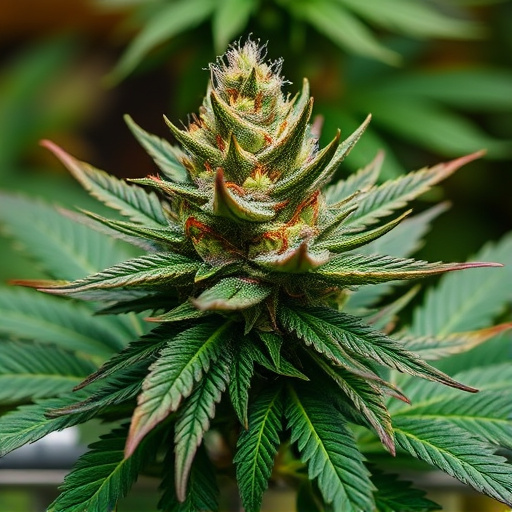
Cannabis flowers, known for their potent aroma, owe much of their strong scent to a diverse range of chemical compounds called terpenes. These aromatic molecules play a dual role in the plant’s life cycle—attracting pollinators and repelling potential predators. The variety and concentration of terpenes can vary significantly between different cannabis strains, contributing to the distinctive odors associated with the strongest cannabis strains.
In the natural world, terpenes serve as chemical signals that guide insects and birds towards the flowers for nectar and pollen collection, fostering pollination. Simultaneously, certain terpenes act as defensive compounds, repelling herbivores and other harmful insects. This dual functionality has not only shaped the evolution of cannabis but also influenced the development of diverse terpene profiles in modern-day strongest cannabis strains, each offering unique sensory experiences and potential therapeutic benefits.
Cannabis flowers emit a potent aroma due to complex chemical interactions, particularly involving terpenes and volatile compounds. These compounds not only contribute to the characteristic smell of different cannabis strains, but also serve crucial ecological roles. Understanding the chemistry behind this distinctive scent helps us appreciate both the beauty of nature’s design and the unique properties that make certain strongest cannabis strains so sought-after.
